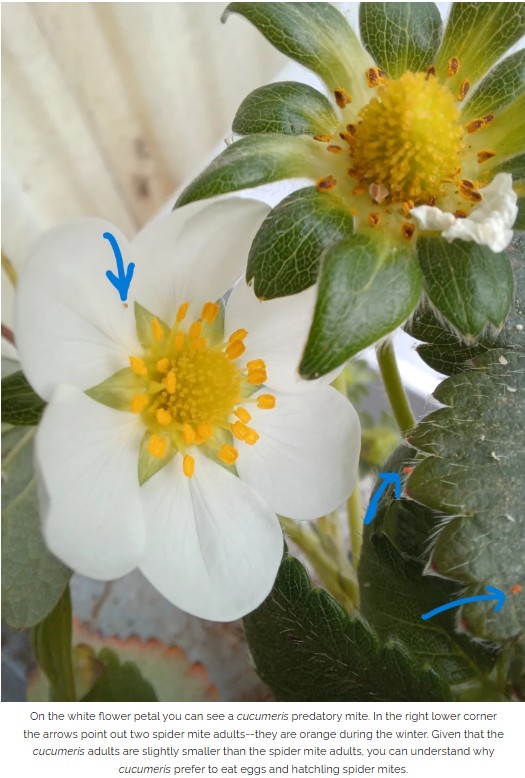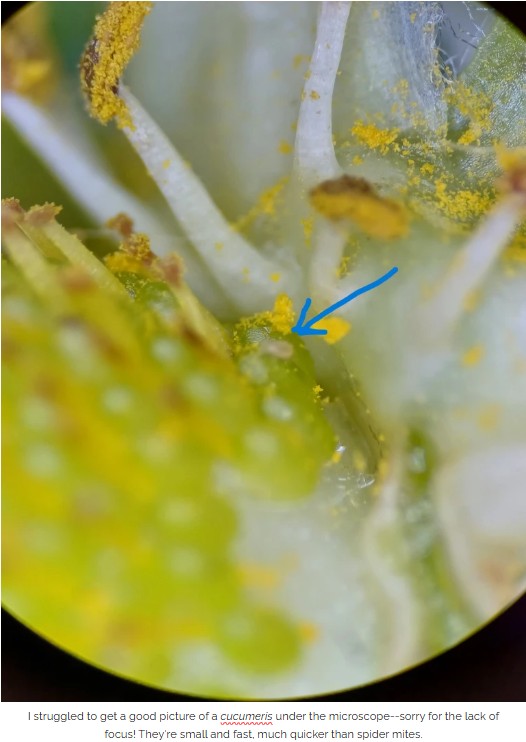© 2025 Berryworld, All Rights Reserved
We grow strawberries in the greenhouse in the winter. After all, who doesn’t want berries on their breakfast every day of the year?
It also gives us a chance to have the same struggles and experiences as commercial growers.
We're learning that the key to successful bi0control is close observations and detailed monitoring. It's time to get intimate with your 10x lens.
In July, we noticed a small patch of spider mites. Not many, but with the potential to become devastating (it’s a heated greenhouse). We also had a few thrips starting in flowers. For this reason, we chose to release N. cucumeris (Bioforce brands them “Mite A”), as these also eat thrips nymphs.
In August, about a month after releasing the predators, I checked on the spider mites. There were still plenty of adults in the hot spot, but no juveniles and few eggs. I didn’t see any cucumeris, but I saw a couple of their eggs. Not knowing quite what to make of this, I shrugged, and went on to the rest of my day.

We grow strawberries in the greenhouse in the winter. After all, who doesn’t want berries on their breakfast every day of the year?
It also gives us a chance to have the same struggles and experiences as commercial growers.
We're learning that the key to successful bi0control is close observations and detailed monitoring. It's time to get intimate with your 10x lens.
In July, we noticed a small patch of spider mites. Not many, but with the potential to become devastating (it’s a heated greenhouse). We also had a few thrips starting in flowers. For this reason, we chose to release N. cucumeris (Bioforce brands them “Mite A”), as these also eat thrips nymphs.
In August, about a month after releasing the predators, I checked on the spider mites. There were still plenty of adults in the hot spot, but no juveniles and few eggs. I didn’t see any cucumeris, but I saw a couple of their eggs. Not knowing quite what to make of this, I shrugged, and went on to the rest of my day.

So the cucumeris worked! I thought that because I was still seeing spider mite adults that the biocontrol had been a failure, but actually it was a success. The predators established well, thrips were kept at bay, and spider mites did not spread to the rest of the greenhouse.
If I was going to keep these plants fruiting, my next step would be to bring in persimilis as a spider mite specialist, now that the weather is warming up and I can see that spider mite hot spot starting to have the potential to spread (juveniles are surviving).
The key to successful biocontrol is continual and detailed monitoring. It’s a completely different mindset to chemical control. Understanding the life cycles and characteristics of both the pest and the biocontrol is the trick to making it work.